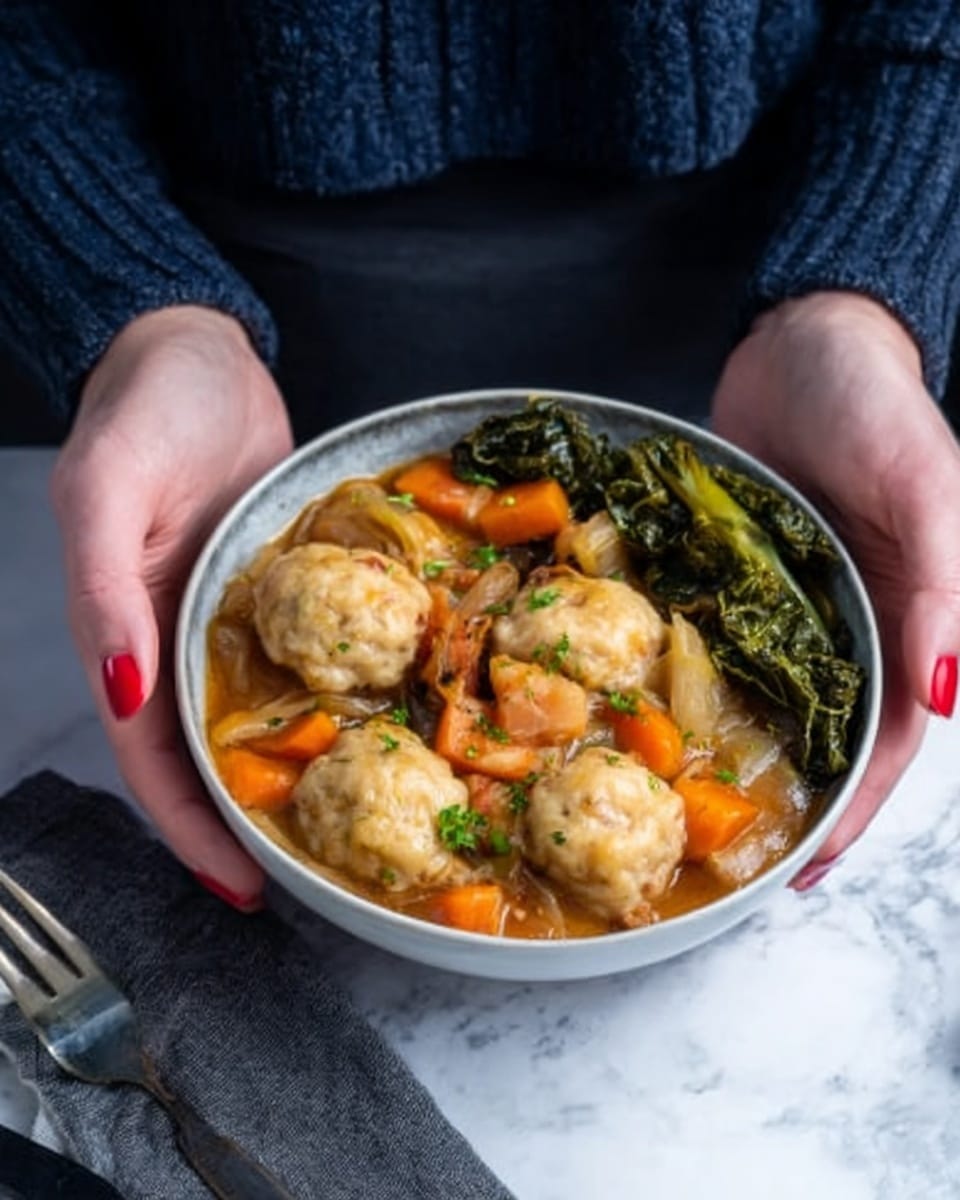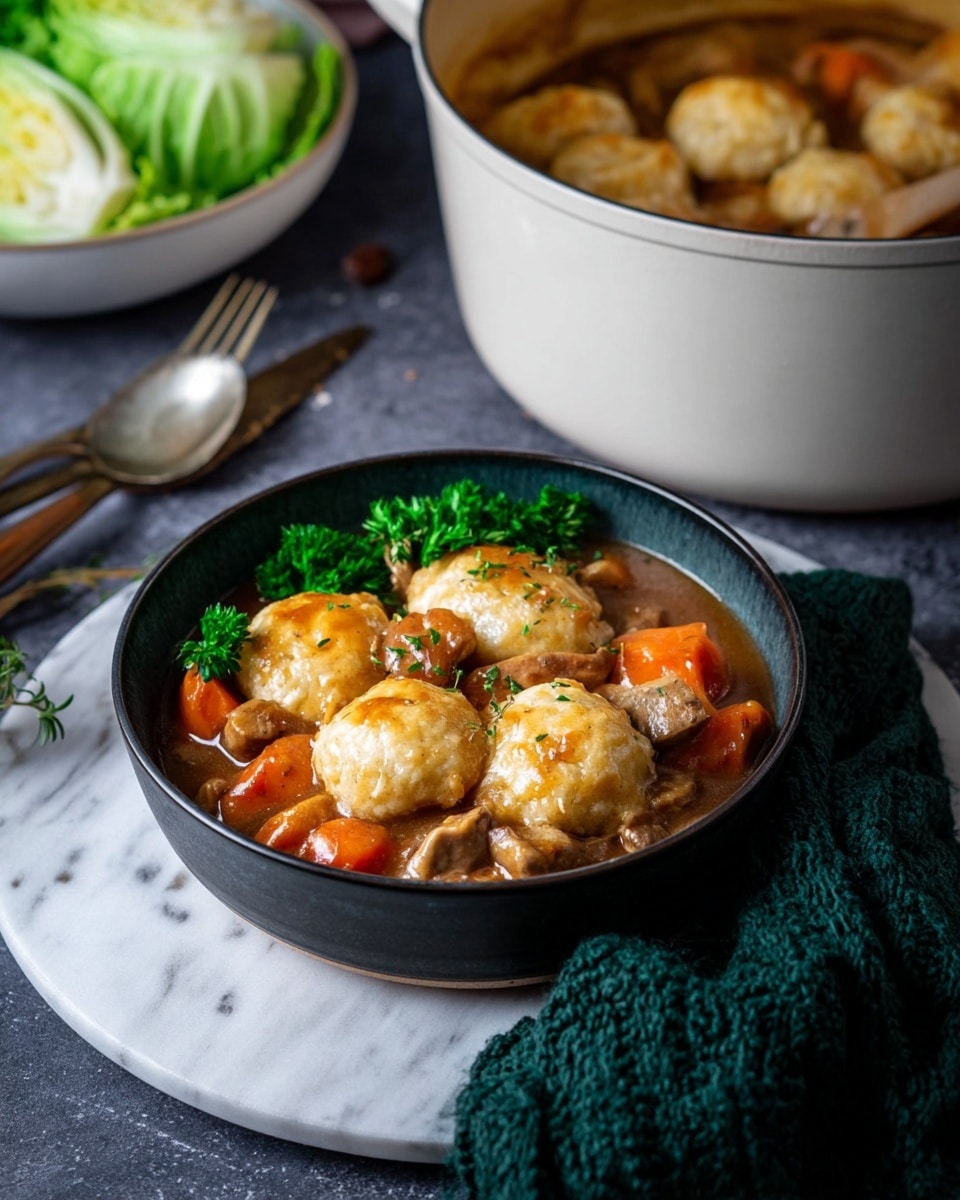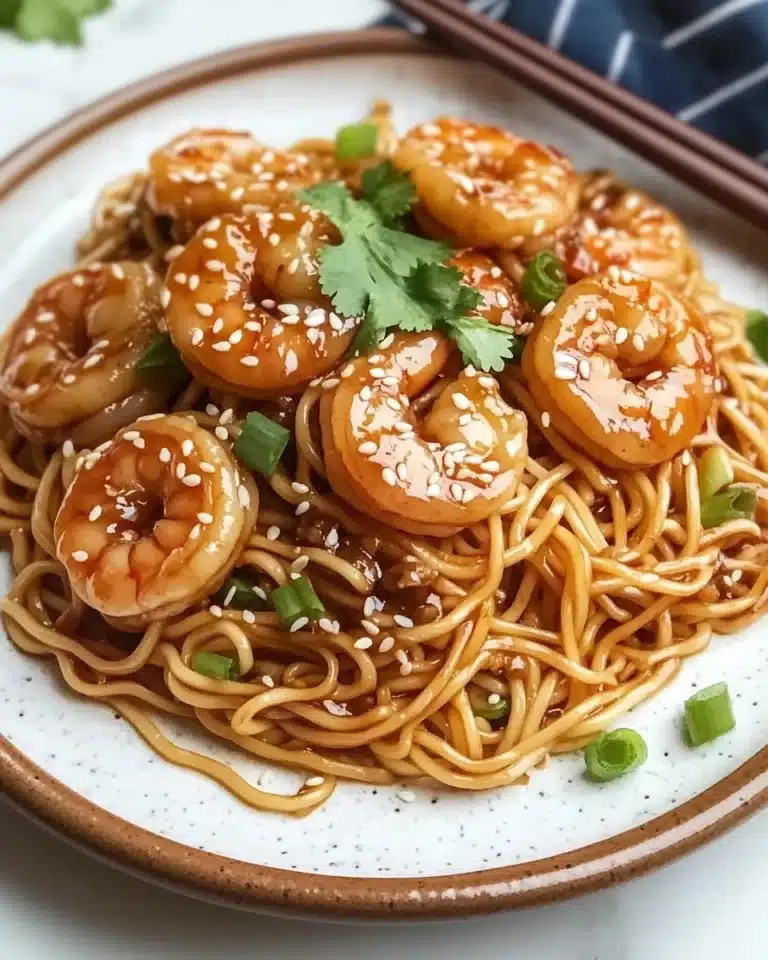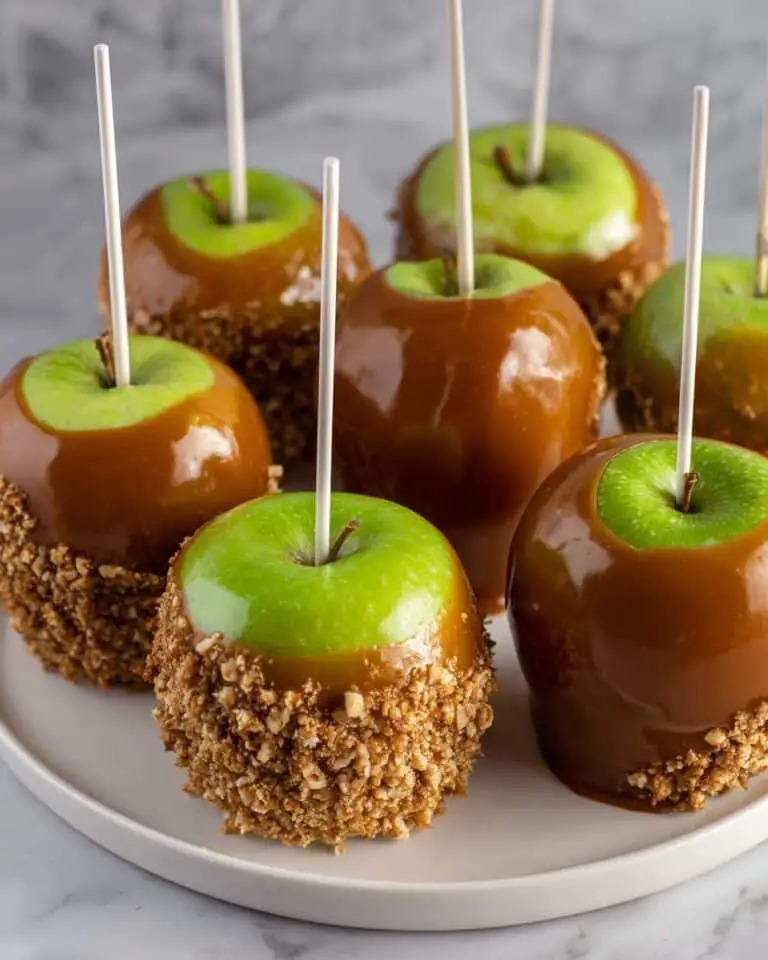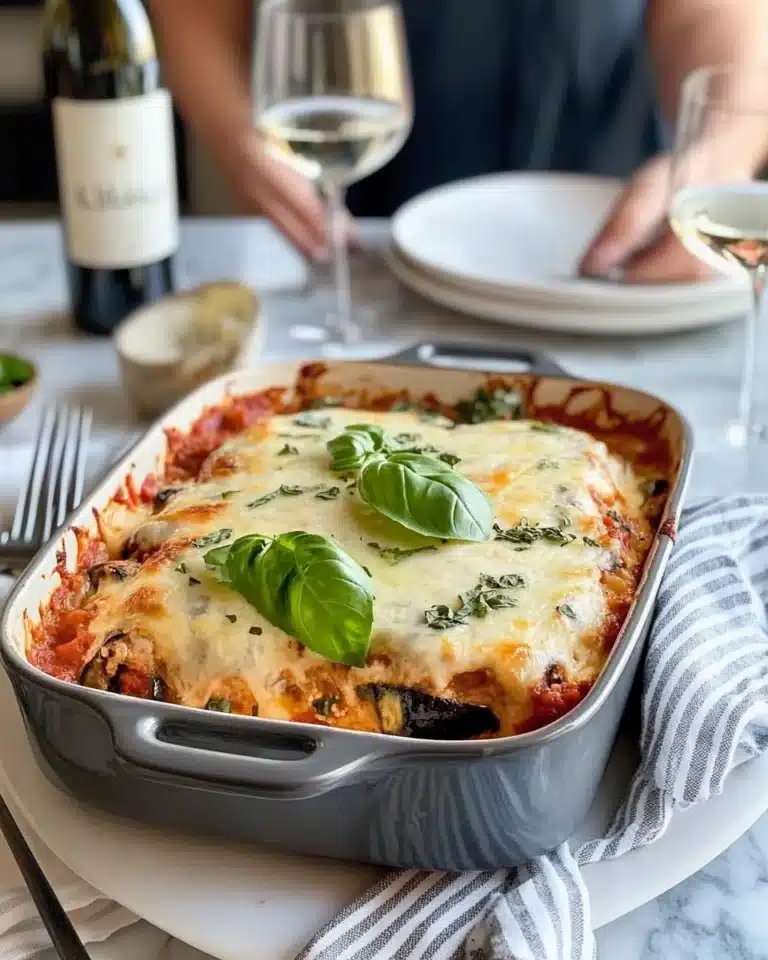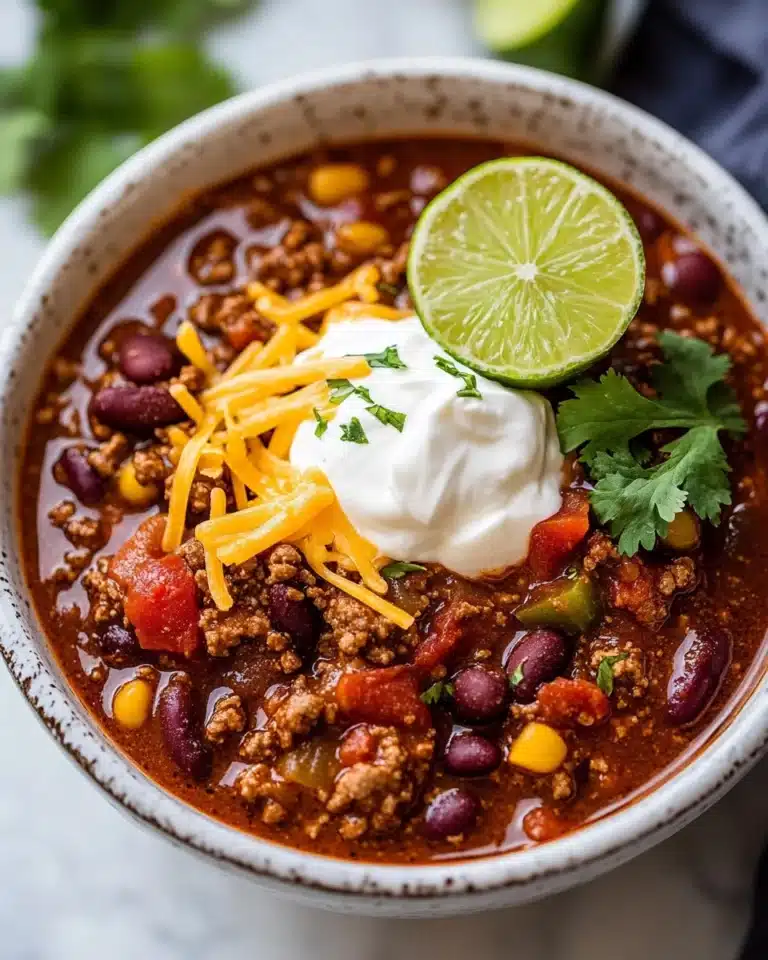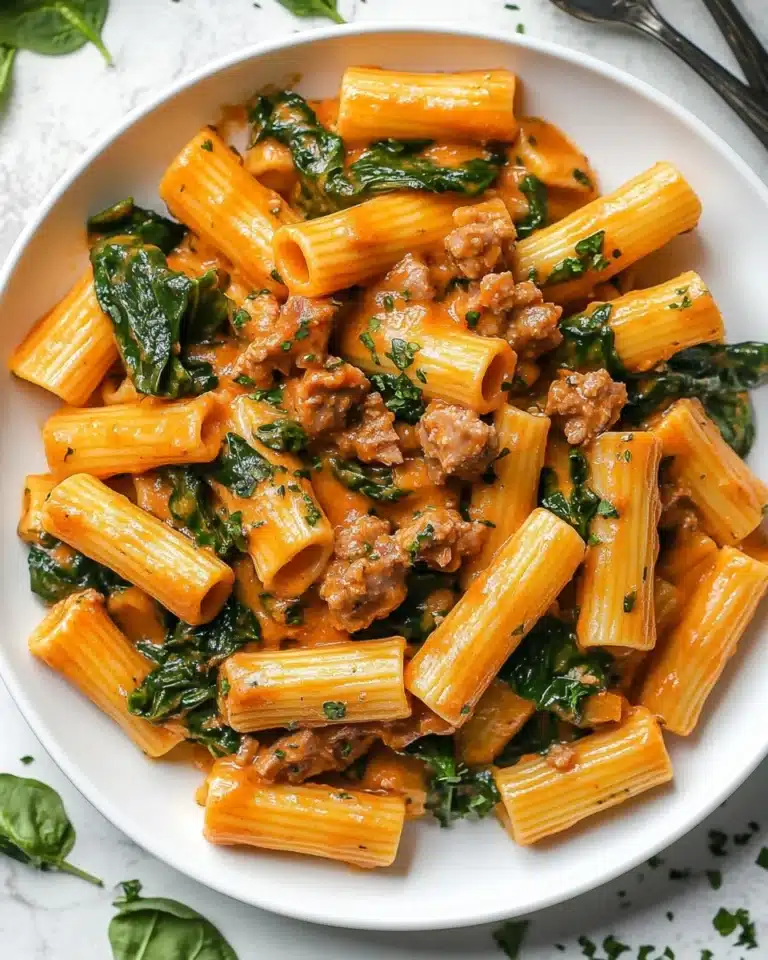I absolutely love sharing this Traditional Beef Stew with Suet Dumplings Recipe—it’s the kind of dish that feels like a big, warm hug on a chilly day. When I first tried making beef stew from scratch and added those fluffy suet dumplings, I knew I’d hit a winner. The beef is tender, the vegetables perfectly cooked, and the rich, savory gravy is elevated by those classic dumplings that soak up all the flavor.
This recipe works wonderfully for lazy weekends when you want to set something cooking and then just relax while the oven does the work. Whether you’re cooking for your family or want a comforting meal to impress friends, you’ll find that the blend of traditional ingredients and straightforward preparation makes this recipe both satisfying and accessible.
Why You’ll Love This Recipe
- Classic Comfort Food: This stew brings together familiar ingredients that create a deeply satisfying meal.
- Fluffy Suet Dumplings: The dumplings add a delightful texture that complements the rich gravy perfectly.
- One-Pot Convenience: You prep and cook most of it in a single pan, making cleanup a breeze.
- Adaptable and Freezable: You can easily adjust ingredients and freeze leftovers without losing flavor or texture.
Ingredients You’ll Need
The ingredients in this Traditional Beef Stew with Suet Dumplings Recipe all work in harmony to give you that perfect balance of hearty meatiness, savory vegetables, and soft, pillowy dumplings. Plus, the beef suet is a star ingredient that adds richness and helps create those dumplings everyone raves about.
- Olive oil: Use a good-quality extra virgin olive oil for better flavor when frying onions and mushrooms.
- Onion: Diced onion brings sweetness and depth once softened gently over low heat.
- Chestnut mushrooms: Quartered mushrooms add an earthy note and meaty texture to the stew.
- Swede (rutabaga): This adds a subtle sweetness and hearty texture—don’t skip it if you can find it!
- Carrots: Peeled and chopped carrots bring color and a natural, mellow sweetness.
- Diced beef: The star protein, look for good-quality stewing beef that’s well-marbled for tenderness.
- Cornflour: Helps thicken the gravy, giving it that luscious, clingy texture we all love.
- Beef stock cube: I prefer organic options like Kallo for a clean, rich flavor.
- Boiling water: To dissolve the stock and make the base of your gravy.
- Bay leaves: These little leaves infuse the stew with classic herbal warmth.
- Self-raising flour: For the dumplings’ base—to give them just the right lift.
- Shredded beef suet: I use Atora Beef Suet, the traditional choice that results in soft, fluffy dumplings.
- Salt: To season the dumplings—adjust to taste.
- Cold water: Needed to bring the dumpling dough together without making it sticky.
Variations
I like to keep things classic with this recipe, but once you’ve mastered the basics, you can absolutely personalize it. It’s great for experimenting, so feel free to swap out veggies or tweak seasonings to suit your family’s tastes.
- Vegetable swaps: Sometimes I swap swede for parsnips or add potatoes for extra thickness in the stew, which works beautifully.
- Herb twists: Adding fresh thyme or rosemary alongside the bay leaves brings out a lovely aromatic note.
- Spice it up: If you like a bit of heat, a pinch of smoked paprika or chilli flakes adds a subtle kick without overpowering.
- Dumpling variations: You can add chopped fresh herbs like parsley to the dumpling dough for a pop of freshness.
How to Make Traditional Beef Stew with Suet Dumplings Recipe
Step 1: Soften the Onions and Mushrooms Just Right
Start by heating your olive oil over low heat in a flameproof, ovenproof pan like a Dutch oven. Add diced onions, cover with a lid, and gently soften them for about 3 minutes—keep an eye so they don’t brown. Then crank the heat up and toss in mouthwatering chestnut mushrooms. Fry everything for around 3 minutes, stirring often, until they get a nice golden color. This layering of flavors at this stage is key for the richness of your stew.
Step 2: Add Root Vegetables and Prepare the Gravy
After your mushrooms and onions are nicely browned, add in your chopped swede and carrots. Fry them on high heat for 2 minutes while stirring frequently to combine flavors. Meanwhile, you’ll make the gravy: mix cornflour and crumbled beef stock cube in a jug, then add a splash of cold water to make a smooth paste. Slowly pour in boiling water, stirring to avoid lumps. Pour this savory gravy into your pan, add the diced beef and bay leaves, stir everything together, and bring to a boil.
Step 3: Slow Cook the Stew for Maximum Tenderness
Put the lid on and slide the whole pan into your preheated oven at 180°C (350°F). Let it cook for two hours to tenderize the beef and meld those beautiful flavors. Halfway through, pop the oven open to check the liquid level. You want the meat and veg nearly submerged in gravy—if it’s evaporated too much, simply add more boiling water and give it a stir. I learned this the hard way on my first attempt, so don’t skip this step!
Step 4: Make and Add Suet Dumplings
About 30 minutes before the stew finishes, mix self-raising flour, shredded suet, and salt in a bowl. Add cold water bit by bit, stirring until it comes together as a firm dough—not too sticky or crumbly. Divide the dough into roughly 16 balls; they don’t have to be perfect! Place these dumplings on top of your stew in a single layer, cover with the lid, and bake for 20 more minutes until the dumplings are cooked and fluffy.
Step 5: Serve and Enjoy!
Once out of the oven, this stew smells incredible—it’s the kind of aroma that fills the whole house with warmth. Serve it immediately with some green vegetables to balance the rich flavors, and maybe a crusty bread to soak up all that luscious gravy. Trust me, your family and guests will go crazy for it!
Pro Tips for Making Traditional Beef Stew with Suet Dumplings Recipe
- Use a Suitable Ovenproof Pan: I use a 4-litre Dutch oven that’s wide enough to fit dumplings in a single layer, which helps them cook evenly.
- Check Liquid Levels Early: Halfway through cooking, check if you need to top up gravy with hot water to prevent dryness.
- Don’t Overwork Dumpling Dough: Mix lightly to keep dumplings soft and fluffy rather than tough.
- Serve Fresh for Best Texture: Dumplings can get heavy if left to sit for too long, so plan to serve right after cooking.
How to Serve Traditional Beef Stew with Suet Dumplings Recipe
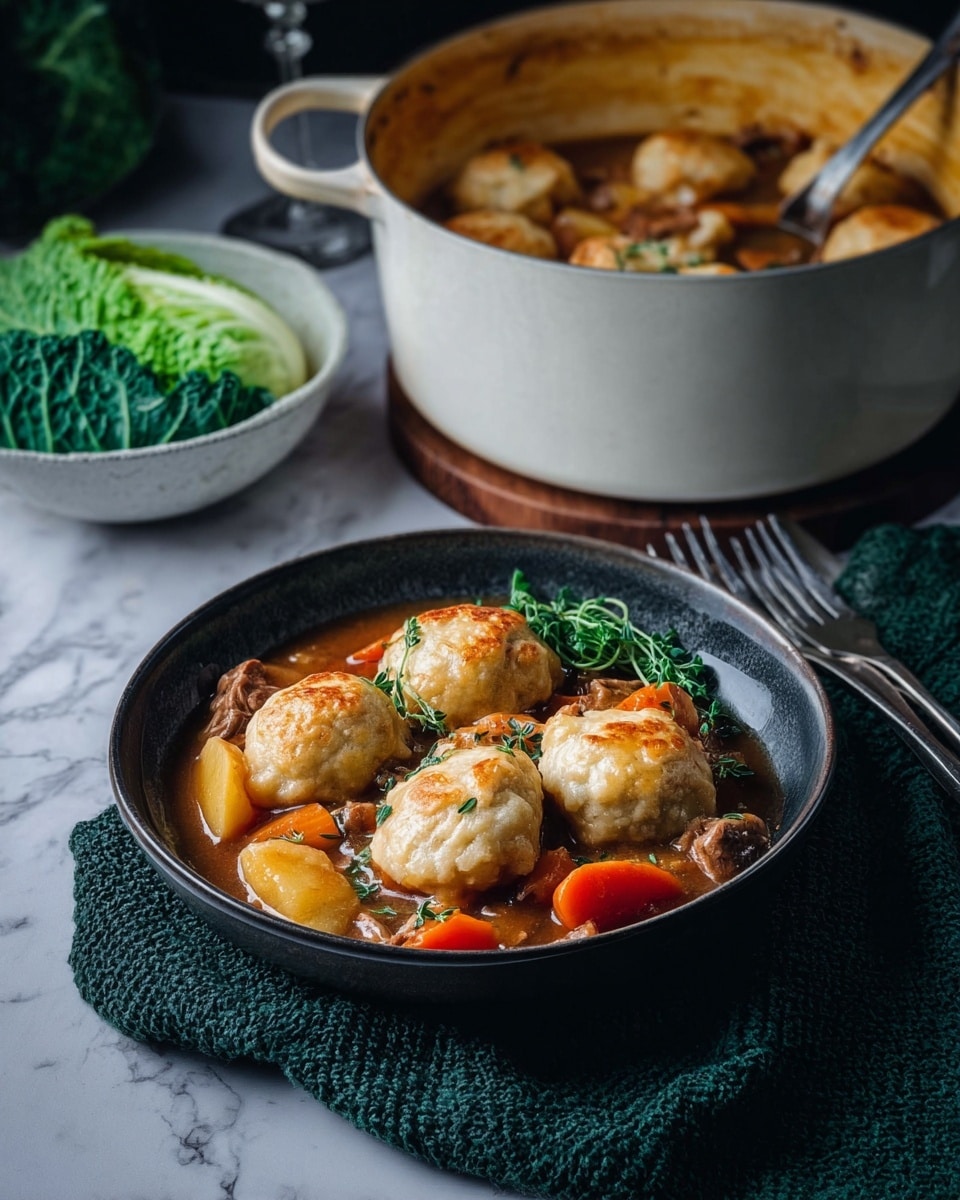
Garnishes
I love garnishing this stew simply with a sprinkle of fresh chopped parsley or a few thyme leaves. It adds a fresh burst of color and subtle herbaceous flavor that balances the stew’s richness without overshadowing it.
Side Dishes
Green vegetables like steamed broccoli, green beans, or peas work beautifully alongside this dish. I sometimes serve it with buttery mashed potatoes or creamy mashed swede for an extra comforting touch.
Creative Ways to Present
For special occasions, I’ve arranged the stew in rustic bowls with a sprinkle of freshly grated horseradish on top of the dumplings—it adds a gentle zing that surprises guests. A decorative slate board with rustic bread and small ramekins of pickles or chutney makes for a cozy, inviting presentation.
Make Ahead and Storage
Storing Leftovers
I usually pop leftover stew (without the dumplings) into an airtight container and store it in the fridge for up to three days. The flavor often improves overnight as the ingredients continue to meld, making for great next-day lunches or dinners.
Freezing
Freezing this Traditional Beef Stew with Suet Dumplings Recipe works well if you leave out the dumplings before freezing. I freeze the stew in portions, then add freshly made dumplings when reheating for the best texture and taste.
Reheating
Reheat your stored stew gently on the stove over low heat, giving it a good stir. When adding dumplings, I steam or bake fresh ones to keep them light and fluffy rather than soggy—this little tip keeps your leftover meal just as enjoyable as the first serving!
FAQs
-
Can I use other types of dumplings instead of suet?
While suet dumplings are traditional and offer a distinct texture, you can substitute with plain flour dumplings or even biscuit dough for a different, but still delicious, finish. Just keep in mind that suet adds richness and fluffiness that other types might not replicate exactly.
-
What cut of beef is best for this stew?
Look for stewing beef or diced beef with good marbling and connective tissue, like chuck or braising steak. These tougher cuts become tender and flavorful with slow cooking, giving that melt-in-your-mouth texture.
-
Can I make this stew on the stove instead of the oven?
Absolutely! You can simmer the stew gently on the hob using a heavy-bottomed pan with a lid. Just keep the heat low and stir occasionally, cooking for about two hours until the meat is tender. Add dumplings in the final 20 minutes as usual.
-
How do I know when the dumplings are cooked through?
After baking for about 20 minutes, dumplings should be firm to the touch and cooked through inside. If you’re unsure, you can break one open—it should be fluffy and cooked all the way without doughy centers.
Final Thoughts
This Traditional Beef Stew with Suet Dumplings Recipe has become one of my go-to comfort meals, especially when the days get colder and I want something reliable, tasty, and just a little bit special. It’s not fancy, but sometimes those humble dishes are the ones we remember most fondly. I can’t recommend it enough if you’re looking for a warming, crowd-pleasing recipe that feels authentically home-cooked. Give it a try—I promise you’ll love how it turns out!
Print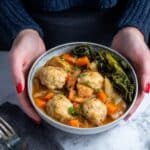
Traditional Beef Stew with Suet Dumplings Recipe
- Prep Time: 10 minutes
- Cook Time: 2 hours 10 minutes
- Total Time: 2 hours 20 minutes
- Yield: 4 servings
- Category: Main Course
- Method: Baking
- Cuisine: British
Description
A hearty and traditional Beef Stew paired with classic Atora Beef Suet dumplings. This comforting dish features tender diced beef slow-cooked in a rich vegetable and mushroom gravy, topped with fluffy suet dumplings. Perfect for cozy dinners and suitable for freezing.
Ingredients
Beef Stew
- 1 tablespoon olive oil
- 1 onion, diced
- 150 g chestnut mushrooms, quartered
- 300 g swede (rutabaga), peeled and chopped into bite-sized chunks (roughly 1cm/1/2inch)
- 300 g carrots, peeled and chopped into bite-sized chunks (roughly 1cm/1/2inch)
- 400 g diced beef (stewing beef)
- 2 tablespoons cornflour
- 1 beef stock cube (Kallo Organic recommended)
- 750 ml boiling water
- 2 bay leaves
Suet Dumplings
- 200 g self-raising flour
- 100 g shredded suet (Atora Beef Suet recommended)
- 1/4 teaspoon salt (or to taste)
- Cold water (quantity as needed)
Instructions
- Prepare the Oven and Pan: Preheat your oven to 180C / 160C fan / gas mark 4 / 350F. Place olive oil and diced onions in a flameproof, ovenproof pan (such as a cast iron casserole or Dutch oven).
- Sauté Onions: Fry the onions over low heat with the lid on for 3 minutes until softened but not browned.
- Cook Mushrooms: Increase heat to high, add quartered mushrooms and fry for 3 minutes, stirring frequently until onions and mushrooms are lightly browned.
- Add Root Vegetables: Add chopped swede and carrots; fry for an additional 2 minutes on high heat, stirring often.
- Make Gravy: In a large jug, combine cornflour and crumbled beef stock cube. Add a splash of cold water and stir to form a smooth paste. Gradually add 750 ml boiling water while stirring to prevent lumps.
- Combine and Boil: Pour the gravy into the pan, add diced beef and bay leaves, stir well and bring to a boil.
- Oven Cook Stew: Cover with a lid and place the pan in the preheated oven. Cook for 2 hours, checking halfway through to ensure there is enough liquid. Add boiling water if needed to keep ingredients nearly submerged.
- Prepare Dumplings: About 30 minutes before stew finishes, combine self-raising flour, suet, and salt in a bowl. Gradually add cold water and mix to form a firm dough that is neither crumbly nor sticky.
- Shape Dumplings: Divide dough into 16 even pieces and roll each into a ball.
- Add Dumplings and Finish Cooking: Remove stew from oven, place dumplings evenly on top, cover with lid and return to oven for 20 minutes until dumplings and stew are fully cooked.
- Serve: Remove lid and serve the beef stew and suet dumplings hot, ideally with green vegetables on the side.
Notes
- Use a flameproof, ovenproof pan such as a cast iron casserole or Dutch oven that can be used on both hob and in oven for best results. If not available, start on the hob and transfer to an ovenproof dish.
- A 4-litre capacity / 24 cm diameter Dutch oven (approx. 4.25 quarts / 9.5 inches) is ideal. Ensure the pot can accommodate the dumplings in a single layer, minimum diameter suggested is 20 cm / 8 inches.
- Check the stew liquid at the halfway point and before adding dumplings. Add boiling water if the liquid has evaporated to keep ingredients nearly submerged.
- This stew freezes well, making it suitable for meal prep and leftovers.
- Nutrition figures are approximate and provided as a guideline.
Nutrition
- Serving Size: 1/4 of recipe
- Calories: 660 kcal
- Sugar: 9 g
- Sodium: 509 mg
- Fat: 33 g
- Saturated Fat: 15 g
- Unsaturated Fat: 15 g
- Trans Fat: 0 g
- Carbohydrates: 58 g
- Fiber: 6 g
- Protein: 32 g
- Cholesterol: 79 mg

